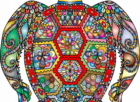Dansk Arkitekt: En Deeper Exploration into the World of Danish Architecture

Dansk Arkitekt: A Profound Insight into Danish Architecture
Danish architecture holds a prominent position in the world of design and construction. Its unique blend of minimalism, functionality, and sustainable design has captivated audiences globally. From iconic landmarks to innovative residential spaces, Danish architects have made significant contributions to the field. This article aims to provide a comprehensive overview of Danish architecture, exploring its diverse types, popular figures, quantitative measurements, variations, and historical advantages and disadvantages.
An Overview of Danish Architecture

Danish architecture encompasses a wide range of styles and principles, rooted in simplicity, functionality, and the concept of ”hygge.” Hygge refers to the Danish philosophy of creating a cozy, warm atmosphere that promotes well-being. Danish architects prioritize natural light, sustainability, and integration with the surrounding environment.
The Comprehensive World of Danish Architects
1. Contemporary Danish Architects:
Contemporary Danish architects continue to push the boundaries of design, creating innovative structures that blend seamlessly with nature. Bjarke Ingels Group (BIG) is one of the most renowned architectural firms, known for their groundbreaking projects like the Copenhagen Harbor Baths and the Amager Bakke waste-to-energy plant.
Another notable figure is Dorte Mandrup, whose designs focus on sustainable solutions and cultural preservation. Mandrup’s work includes the Wadden Sea Center and the Icefjord Center in Greenland.
2. Modernist Danish Architects:
Danish architects like Arne Jacobsen and Jørn Utzon gained international acclaim for their modernist designs during the mid-20th century. Jacobsen’s iconic buildings, such as the SAS Royal Hotel and the Egg Chair, exemplify his sleek and functional approach. Utzon’s masterpiece, the Sydney Opera House, stands as a testament to Danish design excellence.
Quantitative Measures of Danish Architecture
Quantitative measures provide insights into the impact and reach of Danish architecture. Denmark consistently ranks among the top countries in terms of sustainable design, energy efficiency, and livability. The use of renewable energy sources, green building practices, and low-energy consumption are pivotal aspects of Danish architectural projects.
Exploring the Diversity within Danish Architecture
Despite a unifying emphasis on simplicity and functionality, Danish architecture showcases diversity through distinct sub-categories. These variations reflect the regional differences, historical influences, and evolving societal needs.
1. Traditional Danish Farmhouse Architecture:
Traditional Danish farmhouses represent the countryside aesthetic, characterized by thatched roofs, half-timbered structures, and a focus on practicality. These architectural styles are often preserved in rural areas, showcasing the country’s rich cultural heritage.
2. Nordic-inspired Contemporary Architecture:
Nordic-inspired contemporary architecture focuses on minimalism, natural materials, and open spaces. This style emphasizes the integration of interior and exterior environments, facilitating a connection with nature. It often features large windows to maximize natural light and provide breathtaking views.
Historical Perspective: Advantages and Disadvantages of Danish Architecture
1. Advantages:
Danish architecture incorporates sustainability practices, such as energy-efficient design and the use of renewable materials. The emphasis on functional spaces enhances livability and promotes well-being. Danish architects’ attention to detail and integration with the surrounding environment contribute to visually pleasing and harmonious structures.
2. Disadvantages:
Critics argue that Danish architecture’s focus on minimalism and functionality can sometimes result in a lack of ornamentation and artistic expression. Additionally, the cost of sustainable design elements and the limited availability of skilled craftsmen can pose challenges to implementing these concepts on a larger scale.
In conclusion, Danish architecture represents a harmonious blend of minimalism, functionality, and sustainability. Architects in this field continuously push boundaries and create innovative designs that resonate with individuals worldwide. From contemporary masterpieces to traditional farmhouses, Danish architecture embraces diversity while maintaining a strong foundation rooted in the Danish way of life. Whether it is creating iconic landmarks or crafting sustainable residential spaces, Danish architects have left an indelible mark on the world of design and construction.











